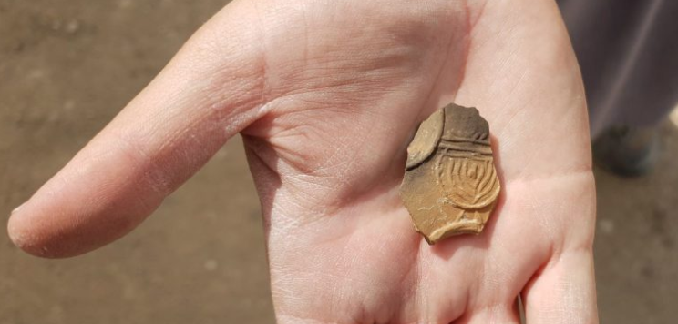Israeli archaeologists unearthed the remains of a Jewish settlement of the Second Temple era in the southern Israeli city of Beersheva, revealing evidence of daily Jewish life and even rebellion.
The site of the settlement, which dates from the 1st century CE to the Bar-Kochva Revolt of 135 CE, was uncovered during excavation ahead of the construction of a new neighborhood. It is the first such settlement to be found in the area, which at the time served as the southern border of the ancient kingdom of Judah.
“Remains of the settlement cover an area of circa 2 dunams and include several structures and installations, such as the foundations of a large watchtower, baking facilities, ancient trash pits and an underground system that was probably used as a Jewish ritual bath,” say excavators Peter Fabian of Ben-Gurion University and Daniel Varga of the Israel Antiquities Authority.
“Signs of a conflagration discovered in some of the structures evince a crisis that the settlement experienced, probably that of the First Jewish Revolt in circa 70 CE,” they added.
The public was invited for a short glimpse the archaeological excavation on the afternoon of April 8.
A particularly interesting find was a potsherd of an oil lamp known as a Jewish “southern lamp” bearing the image of a nine-branched menorah. “This is probably one of the earliest artistic depictions of a nine-branched menorah yet discovered,” Varga noted.
Dozens of bronze coins were also discovered at the site. These have been dated to the period of Roman provincial rule, with some minted in nearby Ashkelon and others in cities across the Roman Empire.
The site’s strategic value on the edge of the kingdom and along the road that led from Tel Beersheva to the southern coastal plain was probably the reason for the construction of the watchtower. While today only the foundation remains, at the time a staircase would have led to two upper floors. During the late Roman period, the stones of the tower were used to construct other nearby buildings.
[Photo: Israel21c]




